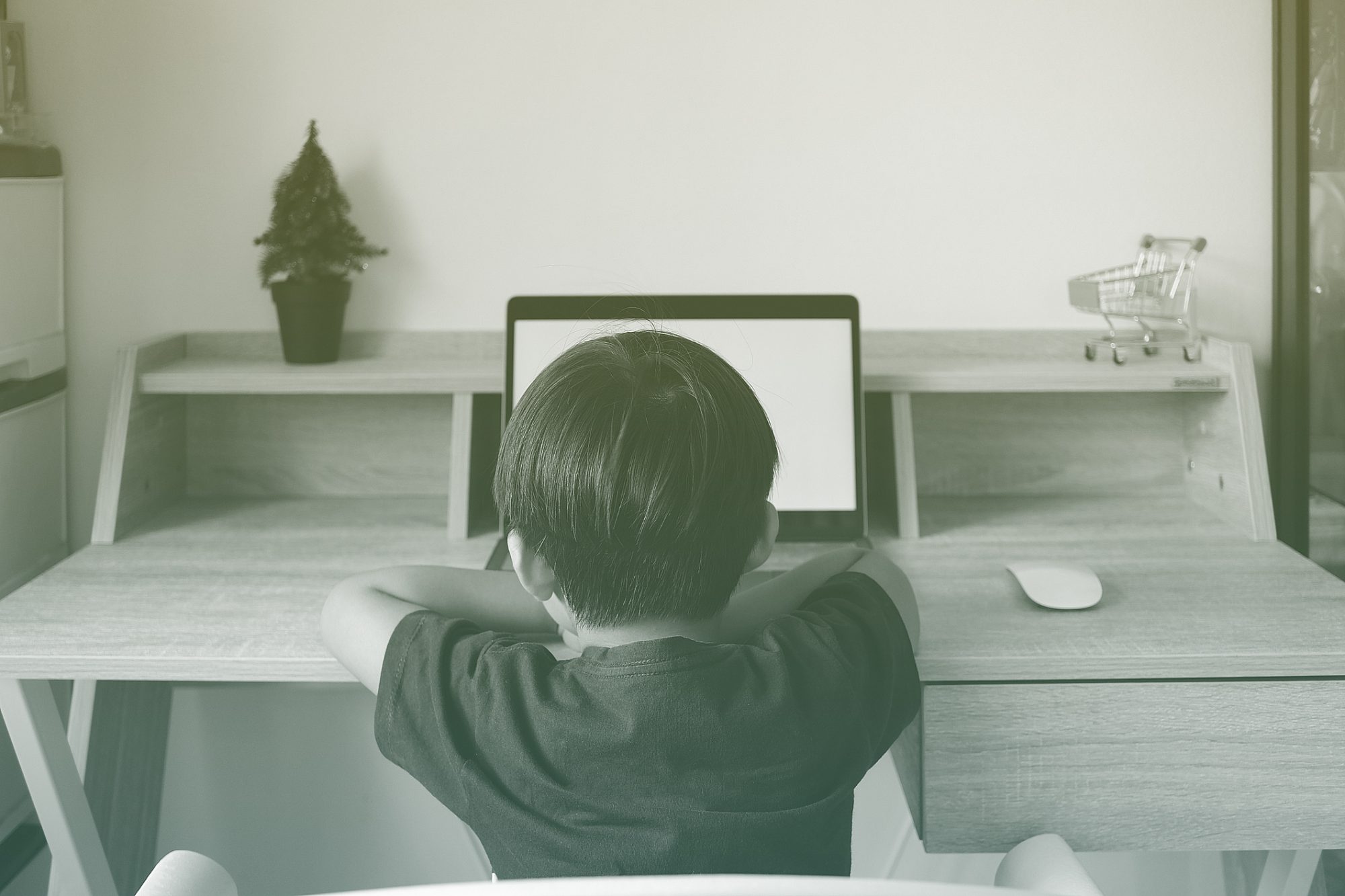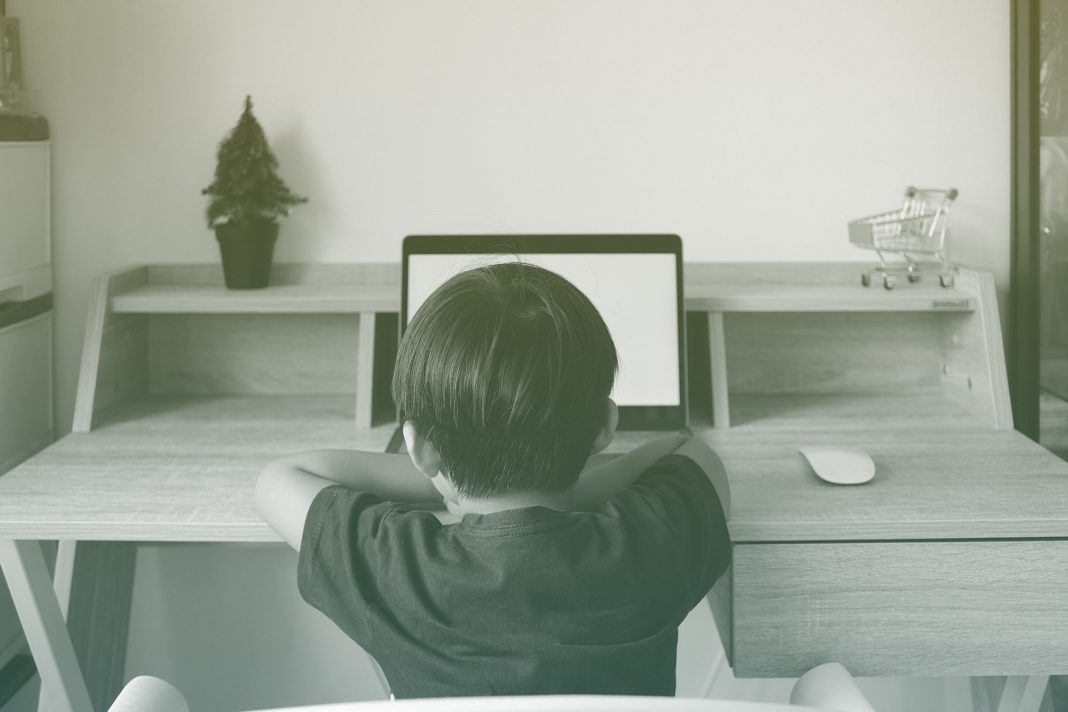
Nothing about the 2020-2021 school year is typical. We're in the middle of a pandemic, some kids and educators aren't even physically back in classrooms, and masks and sanitizer are considered essential back-to-school items. Parents, teachers, and students have had to adjust to school amid COVID-19—and deal with the emotional toll it's all been taking. So, why then, in this time of uncertainty, are some schools still focusing on discipline? Especially when it's the vulnerable and Black students, Indigenous students, and other students of color who are unfairly targeted?
In late August, police were called on a Black 12-year-old in Colorado Springs for playing with a green toy gun—in his own home. Since it was during a virtual class, the seventh grader was suspended for five days. In May, a Black 15-year-old in Michigan was sent to a juvenile detention center all because she did not do her online homework, which a judge said was a violation of her probation. And a Black 9-year-old in Sacramento, California had her school email blocked after a principal told her she “bombarded the district’s tech support department with requests.” All of this happened during the pandemic, but it's not out of the norm. If anything, health and safety protocols and virtual learning rules will lead to more needless, discriminatory discipline.
"Black students, along with boys and students with disabilities, are disproportionately disciplined in K-12 public schools, and these disparities are widespread and persistent regardless of the type of disciplinary action, level of school poverty, or type of public school attended," says Kristine Frech, spokesperson for Teach For America. "Research shows that this disparity can have a negative long-term impact on students of color. Because students of color are much more likely to be suspended, expelled, or referred to law enforcement, they’re also more likely to lose important learning time and become involved with the criminal justice system, contributing to the school-to-prison pipeline."
According to a report from Columbia Law School’s Center for Intersectionality and Social Policy Studies, Black boys are three times as likely to be suspended as white boys, while Black girls are six times more likely to be suspended than white girls. And Black students with disabilities are almost three times more likely to be suspended or expelled than white students. The American Civil Liberties Union (ACLU) reports that students who have been suspended or expelled are three times more likely to enter the juvenile justice system. Black girls are the fastest growing population in the system.
In New York State, 60,000 students are suspended each year—and the majority of whom are students of color. This happens almost five times more in schools that are considered "high-need." In fact, one student was suspended every minute in the 2016-2017 school year and offenses could be as small as wearing a hat in the hallway.
"We believe that as a nation we must do more to address the inequities associated with school discipline; they’re a dangerous roadblock to ensuring every student receives an equitable and excellent education that allows them to pursue a future of their dreams," says Frech.
For Linzy Andre, a psychotherapist, mental health consultant, and doctoral student in New York, it's important to focus on what's behind kids "acting out" in school, "which would include the experiences that many Black (and BIPOC) students have and continue to endure as a result of simultaneous pandemics and adjusting to a 'new normal.'" Disciplining students, especially in a time like this, could add to the trauma some children face—and put Black students at even more of a disadvantage.
"The decisions by disciplinary teams to expend energy to focus on punishment and suspensions during this time is shameful," says Andre. "I am a firm believer that actions should have consequences, but every action is a reaction to an action that caused it. Many of the maladaptive behaviors we’re seeing with Black and BIPOC students right now are a direct reflection of their development and their ability to cope—or lack thereof—with everything happening around them—in their homes, on their TV, computer, and cellphone screens, in their chat rooms, social media news feeds, in their immediate and distant worlds, etc."
According to research from Stanford University and the NAACP Legal Defense and Educational Fund, implicit bias could be a driver in student discipline: “Teachers reported more negative responses to the misbehavior if it was by a student they believed to be Black, as opposed to a student they believed to be white. Teachers reported that the misbehavior was more severe, felt more hindered by it, and felt more irritated by the Black student. Teachers also expressed a desire to discipline the Black student more severely for the misbehavior and were more likely to anticipate that the Black student would be suspended in the future."
Vulnerable or low-income students might be targeted even more due to a lack of resources. "This is the most upsetting thing," says Andre. "Technology is an immense determinant of vulnerability for success in the remote school age. Even more for Black and BIPOC students whose families may not have access to internet service or devices to access videoconferencing and assignments, due to the cost of internet packages. Then they are punished for lack of attendance—or for not being privileged."
Andre says that some of it comes down to a lack of understanding by teachers. The home life of some students simply is not conducive to remote learning. "We are talking about an invasion of privacy, personhood, and security. There are already a disproportionate number of white teachers in our classrooms. And without warning or opportunity to prepare, the systems that we have invaded the homes of Black—and BIPOC—students with whom they cannot identify. Their cultural beliefs, traditions, and functioning inform their behavior at home, in ways that it may not in their white teacher’s classroom. Their liberties and sense of freedom to, let’s say, grab a cup of water from their own kitchen in the middle of a lesson, can 'disrupt the classroom' and result in disciplinary action. Students who are typically learning in the structured environment of the classroom are now expected to self-regulate in front of a computer screen, while many [distractions] may be happening nearby. These can be the very same distractors that many of our Black (BIPOC) students go to school to escape."
It's on educators to create environments where students can thrive and enjoy learning—helping to avoid behavioral challenges that can quickly escalate to severe discipline. "Strong teacher-student-parent relationships, engaging lessons that pull students into the wonder of a meaningful challenge, and awareness of and respect for cultural differences are essential components of strong teacher leadership in all school settings—whether that is in person or a remote/distance setting," says Frech. "Teachers and students can lean into the trust and mutual respect that exists between them to solve the problems that so often lie at the heart of students’ behavioral challenges."
Time out of the classroom—yes, even time away from a virtual leaning environment—denies students, and primarily students of color, from an education. And this disruption could go far beyond missing a few hours or a few days of school.
"We have to remember that the pandemic has taken a heavy personal toll on students and their families," says Frech. "Before anything else, teachers will need to begin their year by developing relationships with their students; only then can they begin to assess students' learning from the last few months and decide what to prioritize—whether it's academic or related to social-emotional health or trauma—and develop a plan for each student. To be successful, it will be crucial that we keep equity at the center of this work, which includes ongoing examination of school-discipline policies and their application."


